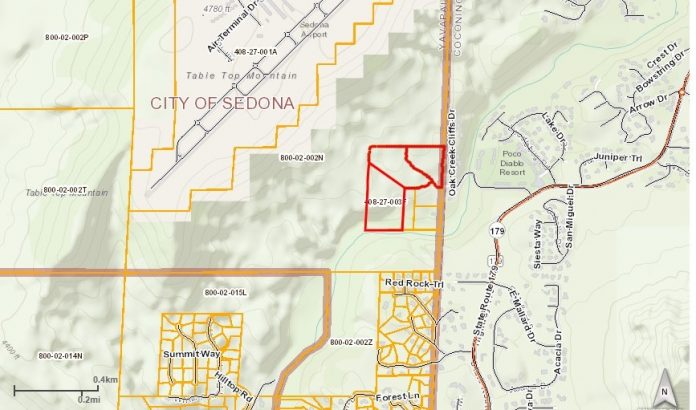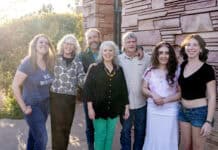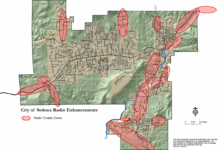
The city of Sedona officially gave its blessing for a proposal by the U.S. Forest Service to purchase land it sold more than a quarter century ago.
USFS is in the process of requesting support in its efforts to buy 27 acres of land in the Doodlebug/Poco Diablo area that Bruce Tobias and Carol and Robert Flynn purchased in 1993.
Since the purchase, the property has been refused access from Oak Creek Cliffs Drive, a private road with an existing low-water creek crossing controlled by Oak Creek Cliffs Homeowners Association, a city report states. Council has weighed in on the access issues dating back to 2007, since the property falls within city boundaries.
In its proposal, the USFS stated as its reasoning for the purchase that it would protect habitat for threatened and endangered species, protect the watershed and water quality, and provide additional areas that could provide recreation opportunities in the future.
The Sedona City Council voted unanimously to support the purchase during its Tuesday, Sept. 22, meeting.
A portion of the letter of support written by Mayor Sandy Moriarty states, “The city of Sedona is pleased to support a plan proposed by the U.S. Forest Service and the Trust for Public Land to purchase and protect the 27-acre property on Oak Creek near Chavez Crossing from a willing seller and add the property to the Coconino National Forest.
“We understand that such a project would protect the scenery in the area from the development of the property and from construction of an associated access road and also may offer opportunities to create additional recreation trails for the public and tourists to experience Oak Creek.”
The USFS will request the use of funds from the federal Land and Water Conservation Fund. Red Rock District Ranger Amy Tinderholt told council that the purchase of the land is not a guarantee. The project is placed on a list and then prioritized at the federal level against other proposals. This is why support from various entities like council is crucial, she said.
“Every little benefit we get to make our proposal stronger is very, very important,” Tinderholt said. “This is a great parcel for us to be able to obtain.”
She also said the purchase price of the land is $5.5 million.
Land in Limbo
Throughout the city’s involvement in this issue, the Sedona City Council consistently encouraged the land owners and the Oak Creek Cliffs Homeowners Association to work out an access arrangement using the existing private crossing and private road at the Oak Creek Cliffs Drive alignment.
This included council making a formal request to that effect in 2007. The Oak Creek Cliffs Homeowners Association subsequently provided a letter indicating it would not reconsider granting access through its properties.
The parcel owners attempted to negotiate for access through non-federal land to the parcel several times over the years. When negotiations failed, Tobias and the Flynns sued to condemn a private way of necessity in Coconino County Superior Court.
The state court denied the parcel owners’ motion for failing to carry their burden of proving reasonable necessity for the easement because the parcel owners might be able to obtain access over National Forest land.
Subsequently, Tobias and the Flynns filed suit in the U.S. District Court for the District of Arizona. In 2002, the court issued in favor of the plaintiffs, finding that an easement by necessity exists.
A recent draft Environmental Assessment considered four alternatives to providing access to the property. The decision concerned two alternatives taking access from State Route 179 utilizing a bridge over Oak Creek and taking access from Chavez Ranch Road, which would include a 1.4-mile road through an open area of undeveloped land. If the purchase is made by USFS, they will scrap the plans for the access roadway.
In 2018 council gave direction to staff to draft a letter that was later signed by Moriarty. It established environmental concerns as the first priority and impacts to views as the second priority for selecting an alternative. And while the U.S. Forest Service had chosen the 1.4- mile roadway, the city was seeking a hybrid of two of the options that included a bridge over Oak Creek.





















